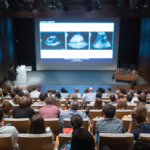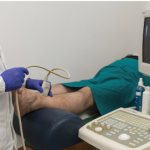
g0d4ather / SHUTTERSTOCK.COM
SAN DIEGO—In a roundup of current research in rheumatoid arthritis (RA) presented at the 2017 ACR/ARHP Annual Meeting Nov. 3–8, Mark C. Genovese, MD, professor of medicine in the Division of Immunology and Rheumatology at Stanford University, Palo Alto, Calif., urged his audience to reflect on the impact therapy advances have made on RA. “In a relatively short period of time, various therapies, strategies and novel molecular entities have resulted in a change in the way we think about this disease, and how our patients perceive their disease.”
Although early and aggressive therapy combinations have achieved actual disease remissions in 30–50% of RA patients, 50–70% percent still don’t reach remission, Dr. Genovese said. “We still have a lot of work to do.” Many patients are partial responders, joint destruction can’t be halted in all patients, and repair of previous damage remains an elusive target. “The distance from where we are to where we want to be is large.”
As part of his update, Dr. Genovese reviewed recent research comparing biologic disease-modifying anti-rheumatic drugs (bDMARDs) with small-molecule treatments.1 “We’re in an era in which we can start thinking of targeted DMARDs combined with tumor necrosis factor inhibitors and methotrexate,” he said. “We can do head-to-head trials comparing biologics with small-molecule therapies and see, ultimately, which regimen [proves] most effective.”
Such comparative investigations are illustrated by the TEAR Trial of aggressive combination therapies, he said.2 “In the future, we need to do comparative trials and take our standard of care and compare it with novel therapies, because we need to achieve higher levels of response. Maybe that will guide us moving forward.”
Research has also found that using a bispecific monoclonal antibody approach can potentially offer higher success rates. This approach involves using a single antibody with the binding sites for two or more targets.
Other examples of how the field may move forward include newer rational combinations of treatment, such as novel therapies plus existing biologics or two, novel, small molecules used together, particularly for refractory or partially responsive cases. Finally, advancements may come from the development of biomarkers helping predict what subgroups may respond best to an individual treatment.
New Imaging Strategies
In a second presentation at the session, Update in RA: Benefits & Harms of Biologics & Small Molecules & Imaging Strategies, Peter Taylor, MA, PhD, FRCP, Norman Collisson Professor of Musculoskeletal Sciences and Head of Clinical Sciences at the Botnar Research Center at the University of Oxford, England, discussed the importance of imaging—specifically ultrasound and magnetic resonance imagery (MRI)—in the assessment of RA disease activity. Choosing between the two depends on the question the clinician is trying to answer, which often is whether synovitis is present.


